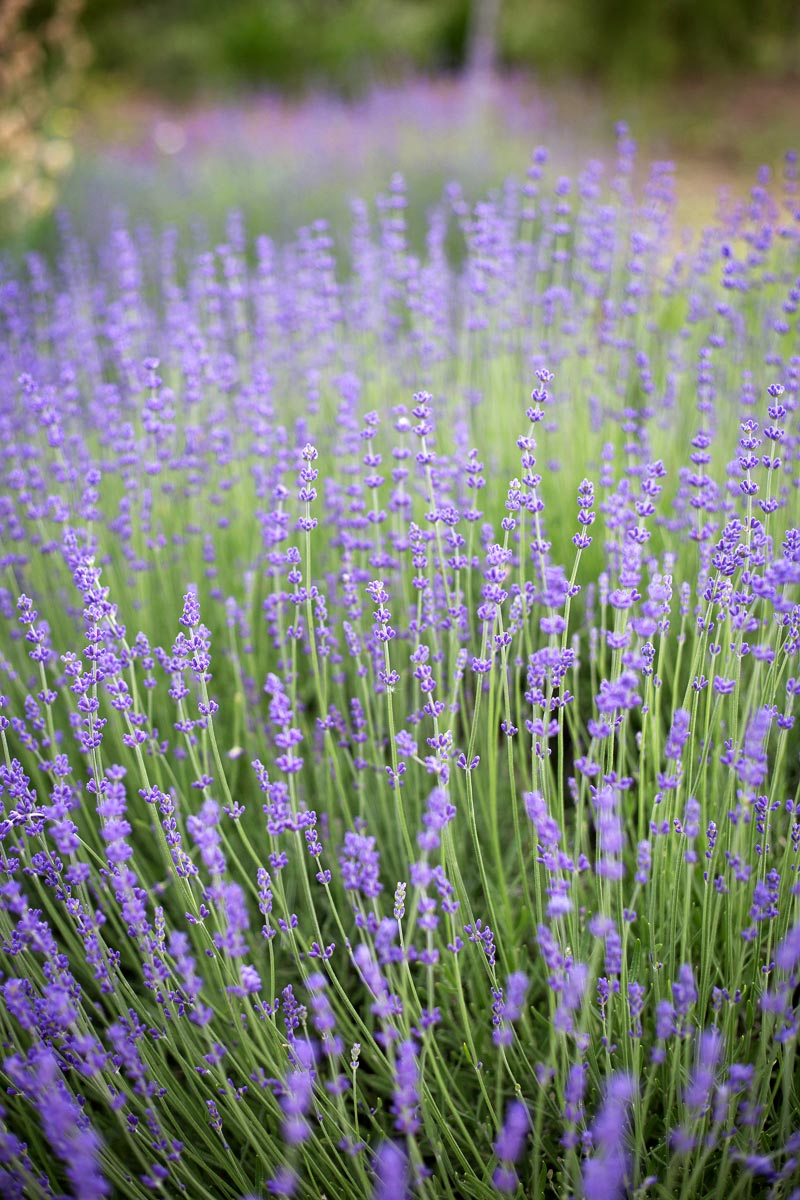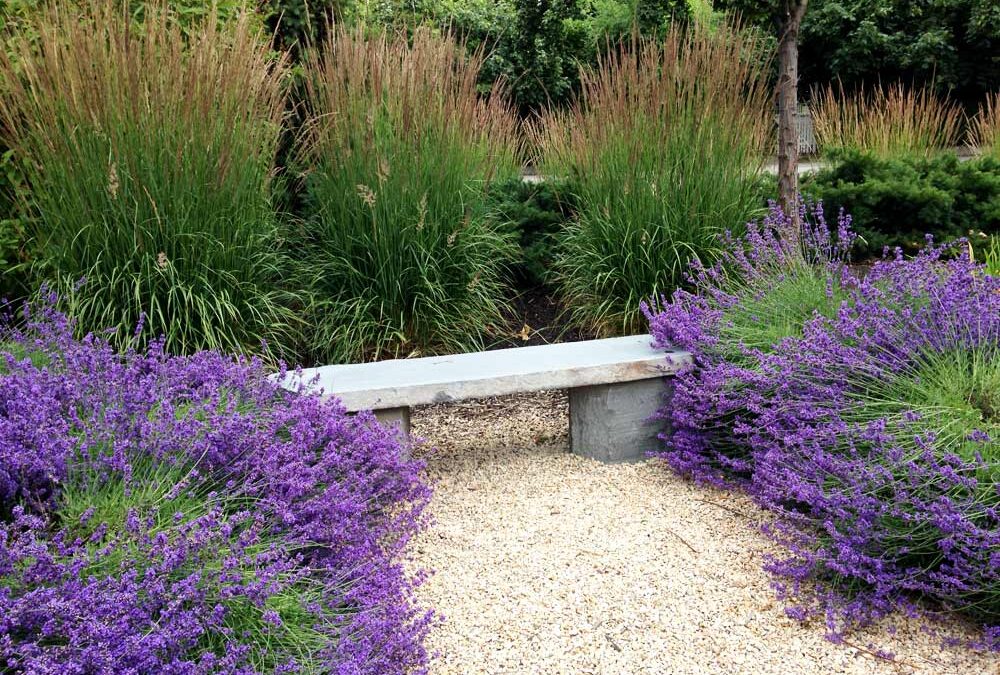Article and Photo by Gwen Steele–
Photo: The fragrant pathway border of Lavender ‘Grosso’ provides an invitation to rest and enjoy the Centennial Garden off Richter Street at St. Michael’s Cathedral. Three blooming feather reed grass (Calamagrostis ‘Karl Foerster’) provide a backdrop.
Thriving in our hot dry summers, lavender blooms abundantly from mid-June for about four weeks, its flowers attracting butterflies, bees and other pollinators. Deadheading encourages repeat bloom at summer’s end.
Being evergreen, lavender looks good year-round providing winter interest in the landscape. The foliage emits its calming fragrance when touched so is great planted beside walkways and garden seating. A bonus, the fragrant foliage makes it unappetising to deer.
Lavender likes well-drained soil. After the first year it will grow without any supplemental water. Native to the Mediterranean, it grows naturally in rocky locations so can tolerate the heat given off by rock mulch.
It does best in full sun.
Lavender needs little maintenance. When flowers are finished, stems are cut off flush with the foliage. Long-bladed shears do the job quickly. If there are a lot of plants, an electric hedge trimmer works well. Plants can be shaped at this time by shearing back some foliage. This encourages new leaves to grow on bare stems and keeps plants compact. Up to one third of the foliage/stems may be cut off. Cutting more than this could damage or kill the plant.
In the fall, flower stems from the second bloom can be cut off or left until spring. Cut out deadwood in spring.
Care
Lavender needs little maintenance. When flowers are finished, stems are cut off flush with the foliage. Long-bladed shears do the job quickly. If there are a lot of plants, an electric hedge trimmer works well.
Plants can be shaped at this time by shearing back some foliage. This encourages new leaves to grow on bare stems and keeps plants compact. Up to one-third of the foliage/stems may be cut off. Cutting more than this could damage or kill the plant.
In the fall, flower stems from the second bloom can be cut off or left until spring. Cut out deadwood in spring.
Old, misshapen lavenders may be beyond rejuvenation and need to be replaced.

Varieties
There are many varieties available. Choose one to fit your space. A dwarf variety, Lavendula angustifolia ‘Blue Cushion’ grows 12 to 18 inches high and wide. A mid-sized variety, L. ‘Hidcote’, has been used effectively along the cycle/walk corridor on Cawston Avenue. Lavendula x intermedia varieties grow to three feet high and wide. When mature, they have striking silver foliage and long-stemmed blooms. In 2013 Lavendula x intermedia ‘Grosso’ was planted as a low hedge along Sutherland Avenue in the water-wise garden at St. Michael’s Cathedral. Spanish lavender (L. stoechas) is not hardy here. Lavender is a sub-shrub, growing from a single woody stem. It cannot be divided. Some lavender plants produce seedlings, however, they may not be the same as the parent. To get an identical plant, propagation must be done from cuttings.Companion Plants
Great companion plants for lavender include sedums, especially the tall, late-blooming varieties such as ’Autumn Joy’ and ‘Matrona’.
Deep-yellow flowers of Achillea ‘Moonshine’ yarrow or Coreopsis ‘Golden Gain’ provide a good colour contrast.
Silvery-grey leaves of blue oat grass provide a good foliage texture contrast.
To find more plants that like the same conditions, check the OXA Plant Database. Select ‘dry’ and ‘full sun’.
To learn more about lavender, and see many varieties that thrive here, visit the Okanagan Lavender Herb Farm. They have a beautiful demonstration garden, serve tea, teach lavender crafts, and have a delightful shop.
Check okanaganlavender.com for information and special events.

